2024 July 18 evening
Here’s another selection of recent photographs from Ian Cooper. All photos were taken on July 17 by the #Galloping Goose Trail & *Colquitz River Park.
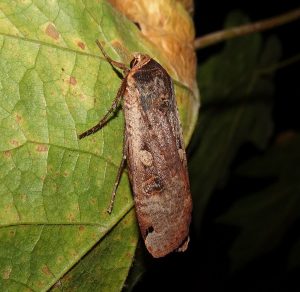 #Large Yellow Underwing Noctua pronuba (Lep.: Noctuidae) Ian Cooper
#Large Yellow Underwing Noctua pronuba (Lep.: Noctuidae) Ian Cooper
The next moth was a bit of a puzzler. Although it appears to be in good condition, it has almost no obvious distinctive markings or pattern. In spite of that, Libby Avis, Jeremy Tatum and Ian Cooper all came up with “Possibly or probably Noctua comes, but not certain.” But, although individually uncertain, we all converged on to the same species, so I‘m happy to label it, writes Jeremy, as Noctua comes, without any qualifying uncertainty.
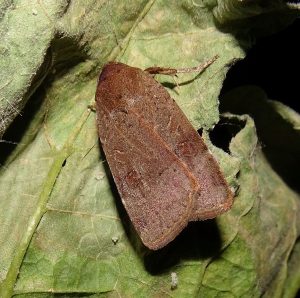 #Lesser Yellow Underwing Noctua comes (Lep.: Noctuidae) Ian Cooper
#Lesser Yellow Underwing Noctua comes (Lep.: Noctuidae) Ian Cooper
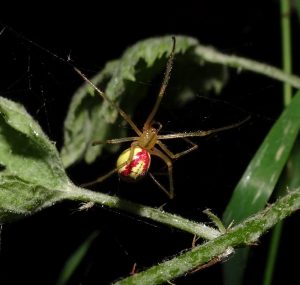 * Red ‘candy striped’ variant of Enoplognatha ovata (Ara.: Theridiidae) Ian Cooper
* Red ‘candy striped’ variant of Enoplognatha ovata (Ara.: Theridiidae) Ian Cooper
I don’t see the red candy striped variant often, so I was glad to spot this one in Colquitz River Park.
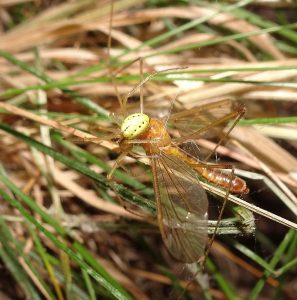 * Enoplognatha ovata (Ara.: Theridiidae) with a male crane fly prey.
* Enoplognatha ovata (Ara.: Theridiidae) with a male crane fly prey.
A somewhat difficult photo to capture because of the ‘busy’ background, but the sight of this small spider with a much larger prey was intriguing.
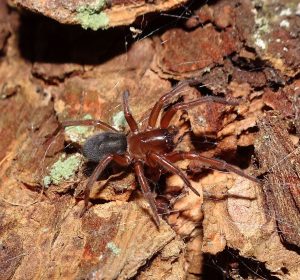 # Callobius sp. (probably pictus) (Ara.: Amaurobiidae) Ian Cooper
# Callobius sp. (probably pictus) (Ara.: Amaurobiidae) Ian Cooper
I’ve seen this spider hiding in its crevice residence on a conifer tree by the GG Trail previously. This time it was out in the open.
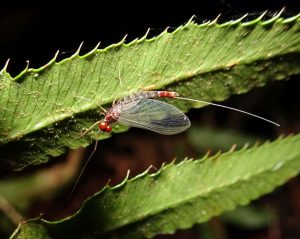 #Mayfly (Ephemeroptera) Ian Cooper
#Mayfly (Ephemeroptera) Ian Cooper
A lady beetle puzzle: Ian Cooper photographed the first of these below in Vic West, and Sher Falls photographed the second (two photographs of the same individual) in Nanaimo. These are Asian Lady Beetles Harmonia axyridis. This lady beetle has many different forms, many of which don’t look at all like these ones. Libby Avis tells us that the form conspicua is black with one red blotch on each elytron, so this may be Ian’s beetle. The form spectabilis is black with two red blotches on each elytron, so this may be Sher’s.
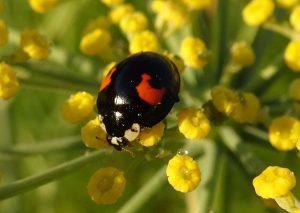 Harmonia axyridis (Col.: Coccinellidae) Ian Cooper
Harmonia axyridis (Col.: Coccinellidae) Ian Cooper
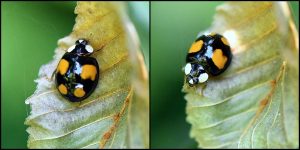 Harmonia axyridis (Col.: Coccinellidae) Sher Falls
Harmonia axyridis (Col.: Coccinellidae) Sher Falls
Jeremy Tatum writes: At 5:30 pm today there was a pristine fresh Anise Swallowtail resting with its wings fully open on the Oregon Grape (now Berberis, formerly Mahonia) just outside the entrance to the Mount Tolmie reservoir. A brief overhead fly-by of a Lorquin’s Admiral was the only other butterfly I saw.
Val George writes: This Eulithis xylina was on the wall of my Oak Bay house this morning, July 18
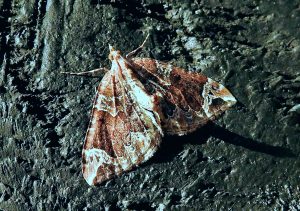 Northwestern Phoenix Eulithis xylina (Lep.: Geometridae) Val George
Northwestern Phoenix Eulithis xylina (Lep.: Geometridae) Val George
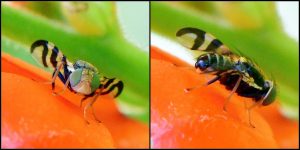 Rhagoletis berberis (Dip.: Tephritidae) Sher Falls
Rhagoletis berberis (Dip.: Tephritidae) Sher Falls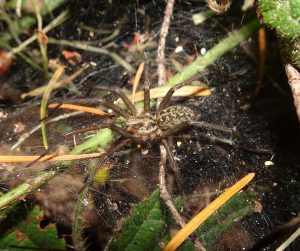 Eratigena duellica (Ara: Agelenidae) Ian Cooper
Eratigena duellica (Ara: Agelenidae) Ian Cooper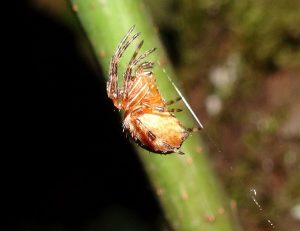 Araneus diadematus (Cross Orb-weaver) (Ara.: Araneidae) Ian Cooper
Araneus diadematus (Cross Orb-weaver) (Ara.: Araneidae) Ian Cooper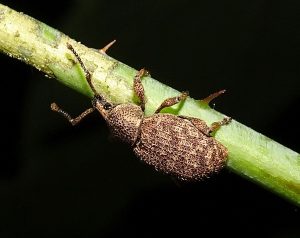 # Raspberry Weevil – Otiorhynchus singularis (Col.: Curculionidae) Ian Cooper
# Raspberry Weevil – Otiorhynchus singularis (Col.: Curculionidae) Ian Cooper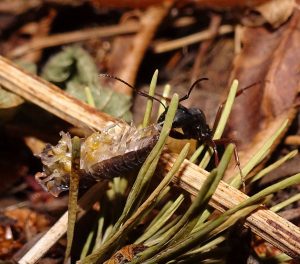 # Western Black Carpenter Ant, Camponotus modoc (Hym.: Formicidae) Ian Cooper
# Western Black Carpenter Ant, Camponotus modoc (Hym.: Formicidae) Ian Cooper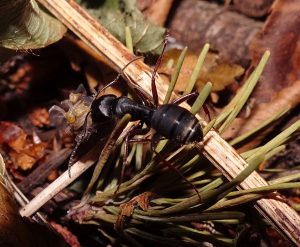 # Western Black Carpenter Ant, Camponotus modoc (Hym.: Formicidae) Ian Cooper
# Western Black Carpenter Ant, Camponotus modoc (Hym.: Formicidae) Ian Cooper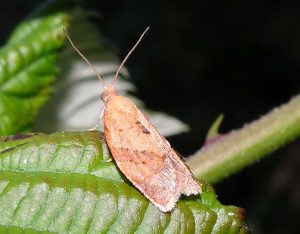 Possibly Choristoneura rosaceana (Lep.: Tortricidae) Ian Cooper
Possibly Choristoneura rosaceana (Lep.: Tortricidae) Ian Cooper
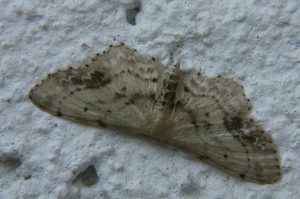
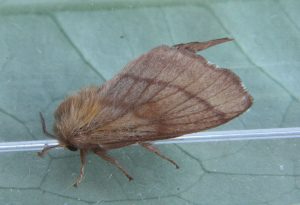 Female Malacosoma disstria (Lep.: Lasiocampidae) Jeremy Tatum
Female Malacosoma disstria (Lep.: Lasiocampidae) Jeremy Tatum #Large Yellow Underwing Noctua pronuba (Lep.: Noctuidae) Ian Cooper
#Large Yellow Underwing Noctua pronuba (Lep.: Noctuidae) Ian Cooper #Lesser Yellow Underwing Noctua comes (Lep.: Noctuidae) Ian Cooper
#Lesser Yellow Underwing Noctua comes (Lep.: Noctuidae) Ian Cooper * Red ‘candy striped’ variant of Enoplognatha ovata (Ara.: Theridiidae) Ian Cooper
* Red ‘candy striped’ variant of Enoplognatha ovata (Ara.: Theridiidae) Ian Cooper * Enoplognatha ovata (Ara.: Theridiidae) with a male crane fly prey.
* Enoplognatha ovata (Ara.: Theridiidae) with a male crane fly prey. # Callobius sp. (probably pictus) (Ara.: Amaurobiidae) Ian Cooper
# Callobius sp. (probably pictus) (Ara.: Amaurobiidae) Ian Cooper #Mayfly (Ephemeroptera) Ian Cooper
#Mayfly (Ephemeroptera) Ian Cooper Harmonia axyridis (Col.: Coccinellidae) Ian Cooper
Harmonia axyridis (Col.: Coccinellidae) Ian Cooper  Harmonia axyridis (Col.: Coccinellidae) Sher Falls
Harmonia axyridis (Col.: Coccinellidae) Sher Falls Northwestern Phoenix Eulithis xylina (Lep.: Geometridae) Val George
Northwestern Phoenix Eulithis xylina (Lep.: Geometridae) Val George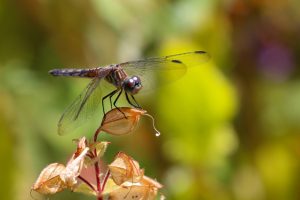 Blue Dasher Pachydiplax longipennis (Odo.: libellulidae) Marie O’Shaughnessy
Blue Dasher Pachydiplax longipennis (Odo.: libellulidae) Marie O’Shaughnessy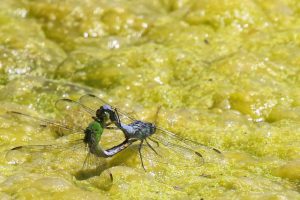 Western Pondhawks Erythemis collocata (Odo.: Libellulidae) Marie O’Shaughnessy
Western Pondhawks Erythemis collocata (Odo.: Libellulidae) Marie O’Shaughnessy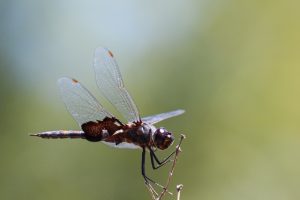 Black Saddlebags Tramea lacerata (Odo.: Libellulidae) Marie O’Shaughnessy
Black Saddlebags Tramea lacerata (Odo.: Libellulidae) Marie O’Shaughnessy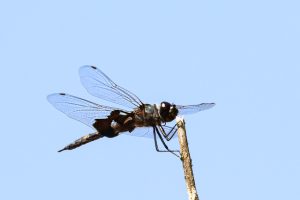 Black Saddlebags Tramea lacerata (Odo.: Libellulidae) Marie O’Shaughnessy
Black Saddlebags Tramea lacerata (Odo.: Libellulidae) Marie O’Shaughnessy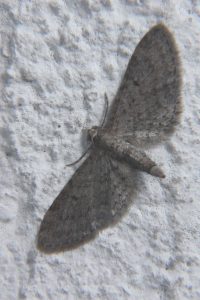
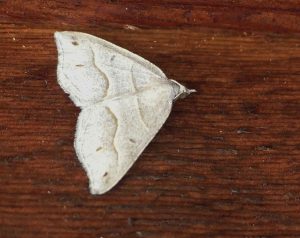 Macaria loquinaria (Lep.: Geometridae) Jochen Möhr)
Macaria loquinaria (Lep.: Geometridae) Jochen Möhr)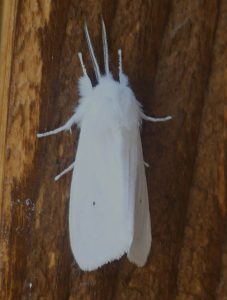 Spilosoma virginica (Lep.: Erebidae – Arctiinae) Jochen Möhr
Spilosoma virginica (Lep.: Erebidae – Arctiinae) Jochen Möhr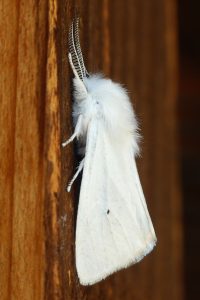
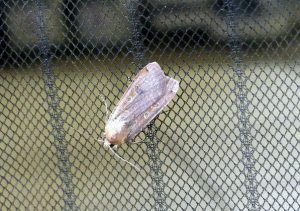 Large Yellow Underwing Noctua pronuba (Lep.: Noctuidae) Aziza Cooper
Large Yellow Underwing Noctua pronuba (Lep.: Noctuidae) Aziza Cooper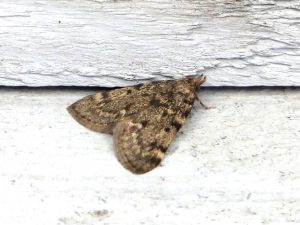 Large Tabby Aglossa pinguinalis (Lep.: Pyralidae) Aziza Cooper
Large Tabby Aglossa pinguinalis (Lep.: Pyralidae) Aziza Cooper